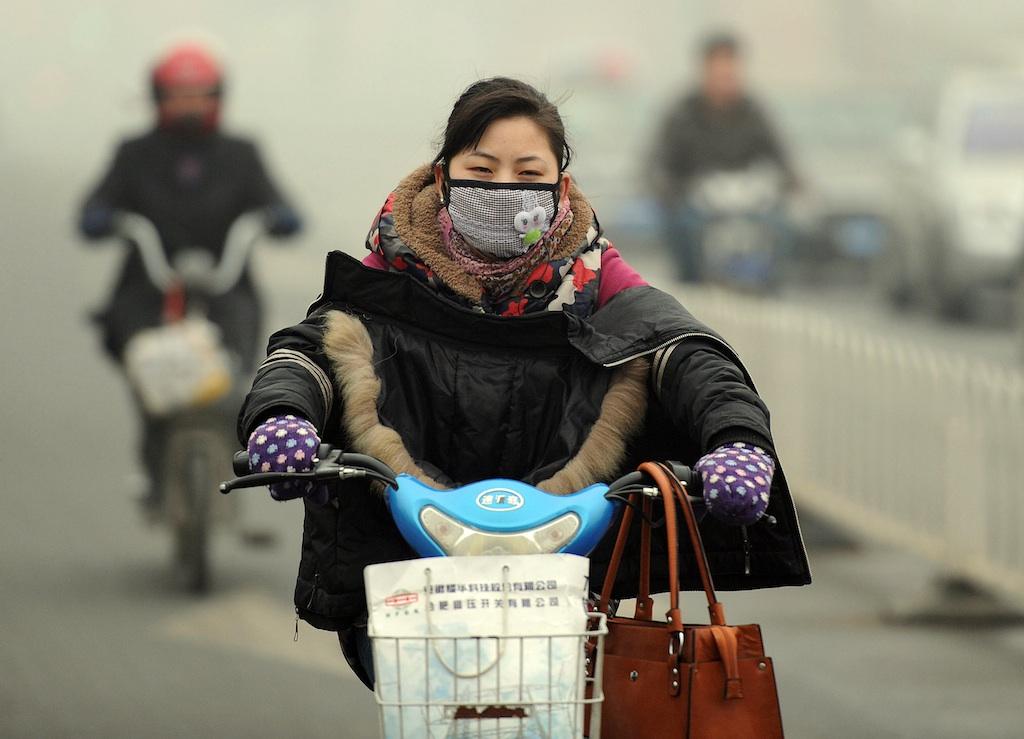Carbon dioxide levels in the atmosphere surpass worrisome milestone
A Chinese motorist wears a mask as she makes her way along a smog filled road in Hefei, east China’s Anhui province on November 29, 2011. The amount of global warming gases sent into the atmosphere made an unprecedented jump in 2010, according to the US Department of Energy’s latest world data on carbon dioxide emissions, with China alone was the biggest polluter with a spike of 212 million metric tons in 2010 over 2009.
Carbon dioxide levels in the atmosphere have surpassed a worrisome milestone for the first time in, oh, three to five million years.
Atmospheric CO2 — one of the main manmade gases responsible for global warming — topped 400 parts per million, a symbolic marker that hasn't been seen since before modern human beings walked the earth.
The reading was taken Friday at the National Oceanic and Atmospheric Administration (NOAA) on the Mauna Loa Observatory in Hawaii.
"It symbolizes that so far we have failed miserably in tackling this problem," said Pieter Tans, the head of the monitoring program at NOAA.
Scientists also found that the rate of CO2 accumulation in the atmosphere has been increasing steadily, from about 0.7 parts per million annually in the 1950s to 2.1 parts per million in the last 10 years. The gas originates mostly from burning fossil fuels like coal, oil and gas.
Mauna Loa has been monitoring greenhouse gas levels since 1958, and have graphed the changes on what has become known as the Keeling Curve, after scientist Charles Keeling, since then.
"In itself, the value 400 parts per million of CO2 has no particular significance for the physics of the climate system: concentration levels have been in the 300s for so long and now we've passed the 400 mark," British atmospheric physicist and professor Joanna Haigh told BBC News.
"However, this does give us the chance to mark the ongoing increase in CO2 concentration and talk about why it's a problem for the climate," she added.
More from GlobalPost: Plankton absorption of CO2 greater than previous estimates
